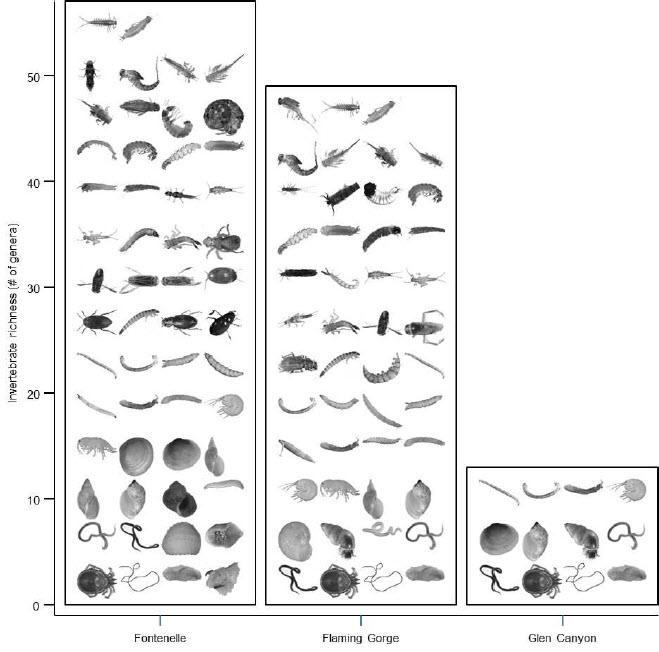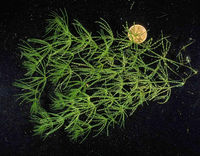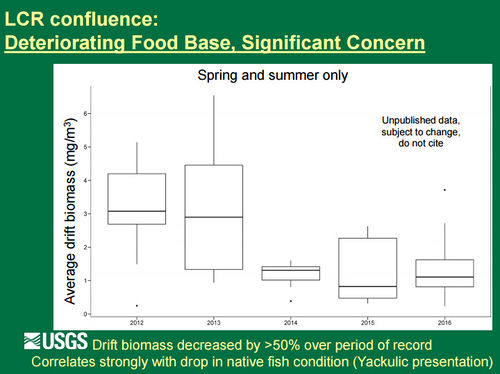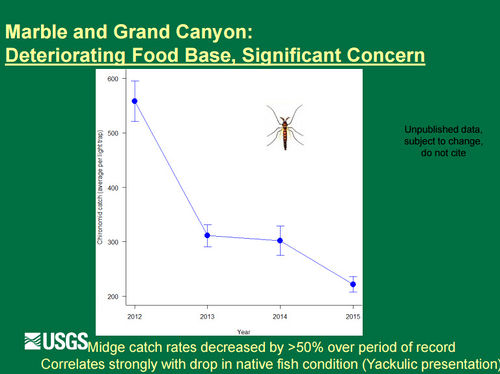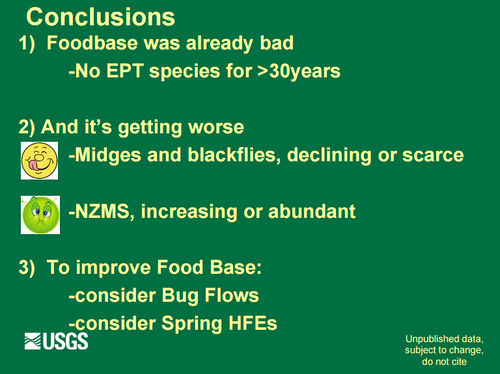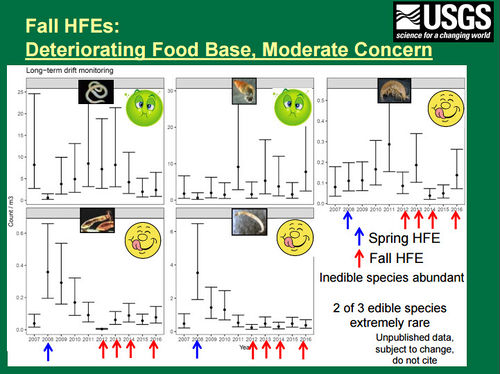|
|
Links and Information
|
|
|
Foodbase Projects
|
|
Oviposition and Egg Desiccation Studies
Foodwebs and Bioenergetics Studies
Measuring Primary Production in the Lees Ferry Reach
The BugFlow Experiment
Citizen Science Insect Monitoring
Hyporheic Anoxia in the Lees Ferry Reach
Downstream Recovery of the Foodbase Community in Several Colorado River Tailwaters
Drift and Food Availability Studies
|
|
|
|
|
Papers and Presentations
|
|
2018
2017
2016
2015
2014
2013
2012
2011
2010
2009
2002
2001
2000
1999
1998
- Stevens, L. E., J. P. Shannon, and D. W. Blinn. 1998. Colorado river benthic ecology in Grand Canyon, Arizona, USA: dam, tributary and geomorphological influences. Regulated Rivers.
- Blinn et al. 1998. Algal ecology in the tailwater stream communities: The Colorado River below Glen Canyon Dam, Arizona. J, Phycol. M, 734-740 (1998)
- Stevens et al. 1998. Chironomidae (Diptera) of the Colorado River, Grand Canyon, Arizona, USA, II: factors influencing distribution. Great Basin Naturalist: Vol. 58: No. 2, Article 2
1997
- Stevens, L. E., J. P. Shannon, and D. W. Blinn. 1997. Colorado River benthic ecology in Grand Canyon, Arizona, USA: dam, tributary and geomorphological influences. Regulated Rivers: Research and Management 13:129–149.
- Shaver et al. Effects of suspended sediment and desiccation on the benthic tailwater community in the Colorado River, USA. Hydrobiologia 357: 63–72, 1997.
- Stevens et al. 1997. Colorado River benthic ecology in Grand Canyon, Arizona, USA: Dam, tributary, and gomorphological influences. Regulated Rivers: Research and Management, Vol. 13, 129–149 (1997)
1994
1991
1990
1981
1959
|
Other Stuff
|
The interaction of fish, foodbase, and temperature
Fish occupying warmer water have higher metabolic demands than individuals in cooler water, and if these demands increase concurrently with a seasonal decline in prey availability, then growth rates may be reduced. [1]
- Black Flies and Midges fuel fish production below Glen Canyon Dam.
- Black Flies and Midges respond positively to spring HFE's.
- Mud Snails were introduced below Glen Canyon Dam around 1995.
- Notably, several species of cold-tolerant nonnative invertebrates were intentionally introduced into the Colorado River after Glen Canyon Dam was closed in 1963. Altogether 10,000 immature mayflies were secured from a commercial source in Minnesota and released at three sites in the Lees Ferry reach. Also, 10,000 snails, 5,000 leeches, and thousands of insects representing at least 10 families were transported from the San Juan River in New Mexico to the river near Lees Ferry. In addition, 50,000 “scuds” (Gammarus lacustris) were introduced into Bright Angel Creek in 1932 and at Lees Ferry and below the dam in 1968, in addition to 2,000 crayfish taken from the LCR near Springerville, AZ (Blinn and Cole 1991). Gammarus lacustris has thrived in the cold, clear reaches below the dam, but the fate of the other introduced species is unknown.
|
|
